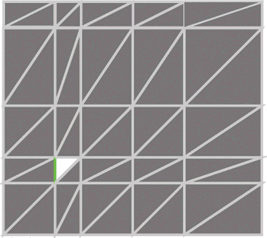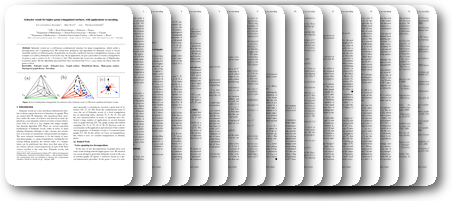
Schnyder woods for higher genus triangulated surfaces, with applications to encoding
Luca Castelli Aleardi, Eric Fusy, Thomas Lewiner
Discrete and Computational Geometry 42(3): pp. 489-516 (october 2009)
Selected for publication from the SoCG 2008 conference
Selected for publication from the SoCG 2008 conference
Abstract:
Schnyder woods are a well-known combinatorial structure for plane triangulations, which yields a decomposition into 3 spanning trees. We extend here definitions and algorithms for Schnyder woods to closed orientable surfaces of arbitrary genus. In particular, we describe a method to traverse a triangulation of genus g and compute a so-called g-Schnyder wood on the way. As an application, we give a procedure to encode a triangulation of genus g and n vertices in 4n+O(g log(n)) bits. This matches the worst-case encoding rate of Edgebreaker in positive genus. All the algorithms presented here have execution time O((n+g)g), hence are linear when the genus is fixed.Downloads:
PDF paper (589 KB)BibTeX:
@article{realizer_dcg,author = {Luca Castelli Aleardi and Eric Fusy and Thomas Lewiner},
title = {Schnyder woods for higher genus triangulated surfaces, with applications to encoding},
year = {2009},
month = {october},
journal = {Discrete and Computational Geometry},
volume = {42},
number = {3},
pages = {489--516},
publisher = {Springer},
doi = {10.1007/s00454-009-9169-z},
url = {\url{http://thomas.lewiner.org/pdfs/realizer_dcg.pdf}}
}
